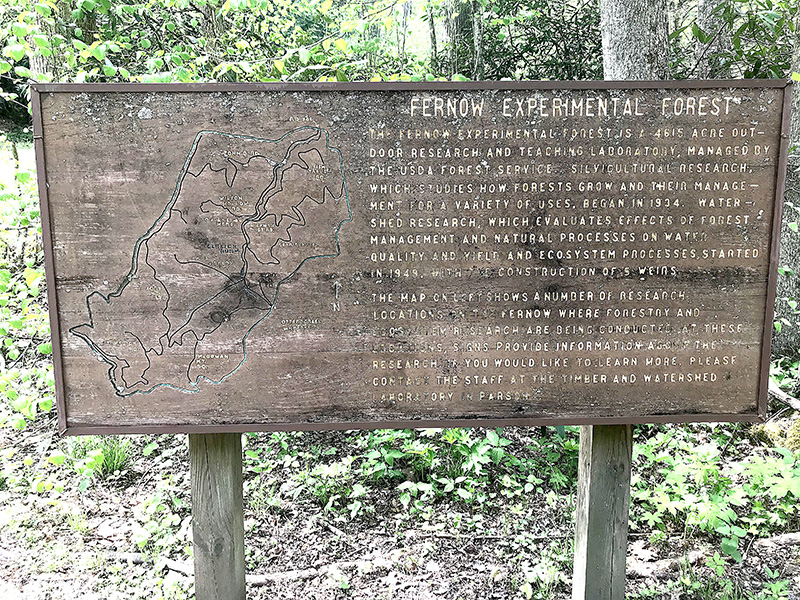
By Heather Clower
The Parsons Advocate
Many Tucker County residents know our county boasts a 5,000 acre experimental forest known as The Fernow, but do they really know what is going on within it? Recently, the USDA Forest Service hosted an Open House to take the interested public around the different experimental plots to spread the word and celebrate the 85th birthday of the forest.
Melissa Thomas-Van Gundy, originally from Pennsylvania, has been with the station in the Nursery Bottom for about 12 years. She explained that, of the total acreage dedicated as the research forest, approximately 60% is currently in active research. However, the entire forest can be utilized if need be. There are presently three to five active timber research projects along with two large watershed experiments being conducted. There is a weather station set up to monitor rainfall and other weather elements happening in the Fernow. On the property there are six, gauged waterfalls used to measure the amount of water being utilized by the trees and vegetation.
Between the years 1910 and 1911, the entire area was cut over and sold off. Now the forest is managed and divided into research sections to determine best harvesting and management practices. They have even left parcels untouched, some areas were logged without using best management practices (BMP’s), and others are used with different forest management practices to show to pros and cons of each. Demo areas are also a part of the Fernow where the researchers can demonstrate to the public tactics such as how to bore trees to show the last decade of growth. One side of the forest sits on a sandstone base soil while the other side is on limestone soils, providing even further variation for the researchers to study.

Controlled burns have also been utilized in the experimental forest for a couple different purposes. One area was a more intensely burned parcel to promote bat habitat while another area was burned on a lesser scale, but several times over a course of time to encourage oak regeneration. Due to the thickness of the bark, oak trees fare well during controlled burns so those already established in the areas only suffer minimal scorching while promoting growth of new oak trees.
An endangered species of plants known as Running Buffalo Clover has also been discovered scattered throughout the forest. This is one of the reasons why it is requested for the vegetation to not be harvested or disturbed as much as possible. These plants are monitored annually and studied to determine the best methods and practices to promote re-establishment of this clover.
The Fernow is available for multiple public uses on a regular basis. Hiking and even hunting is encouraged; the only stipulations are no camping, fires, or gathering of plants. The public is open to partake in self guided tours utilizing maps online. There is also the ability to take virtual tours over the internet. The benefits of taking a guided tour is the rangers can explain the different research being conducted, assist with species identification, and share interesting history of the land and practices.



